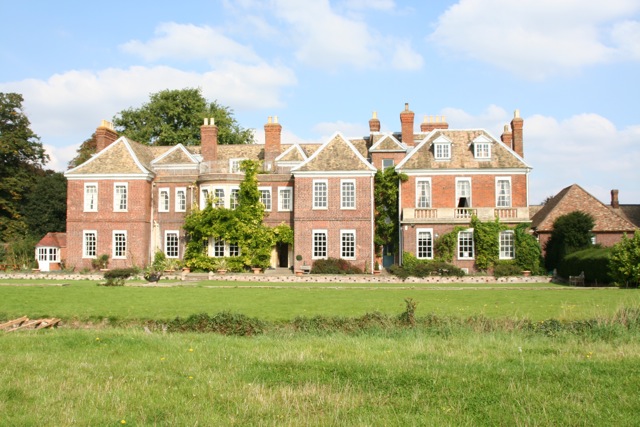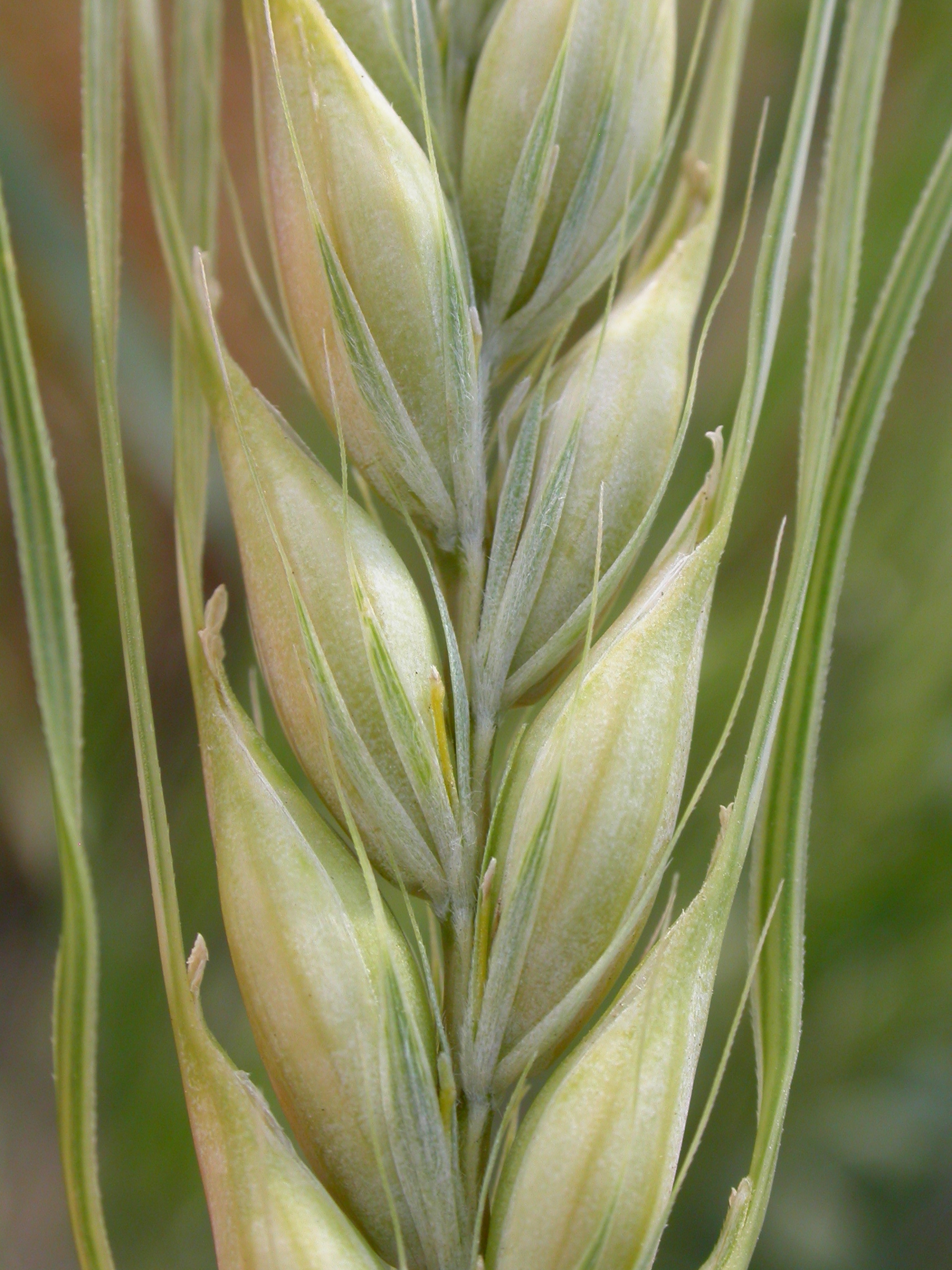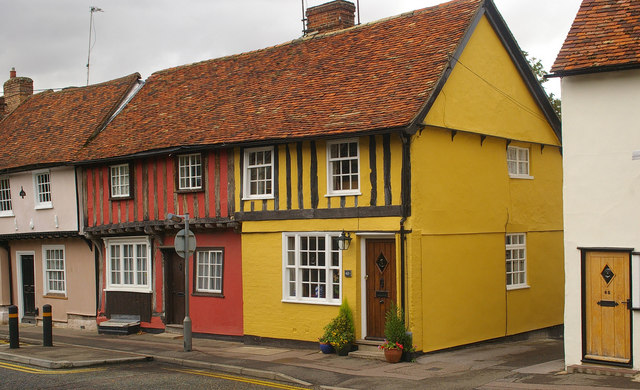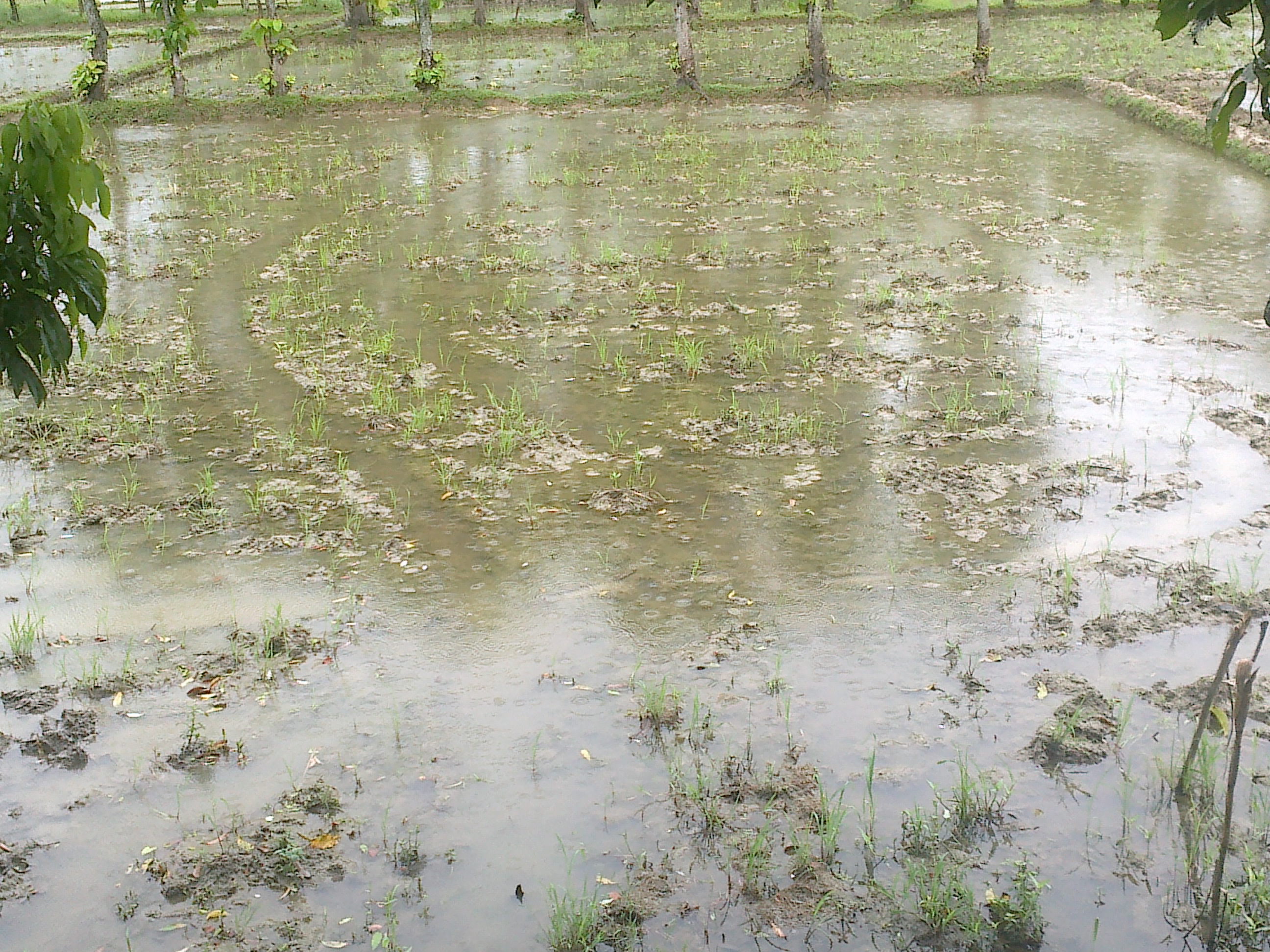|
Plant Breeding Institute
The Plant Breeding Institute was an agricultural research organisation in Cambridge in the United Kingdom between 1912 and 1987. Founding The institute was established in 1912 as part of the School of Agriculture at the University of Cambridge. Rowland Biffen was the first director, and was close with William Bateson who was leading studies of heredity in Cambridge following the rediscovery of the pioneering genetic research of Gregor Mendel in 1900. Biffen began studying cereal breeding in the early 1900s with the aim of producing improved varieties for farmers and millers, and also to test whether Mendel's laws applied to wheat. He demonstrated that resistance to yellow rust was a dominant trait and this culminated in 1910 in the release of the rust-resistant variety Little Joss, which was widely grown for decades and used as a parent for many other varieties. The institute's site was to the west of Cambridge, and it shared land with the School of Agriculture that is today the ... [...More Info...] [...Related Items...] OR: [Wikipedia] [Google] [Baidu] |
University Of Cambridge
, mottoeng = Literal: From here, light and sacred draughts. Non literal: From this place, we gain enlightenment and precious knowledge. , established = , other_name = The Chancellor, Masters and Scholars of the University of Cambridge , type = Public research university , endowment = £7.121 billion (including colleges) , budget = £2.308 billion (excluding colleges) , chancellor = The Lord Sainsbury of Turville , vice_chancellor = Anthony Freeling , students = 24,450 (2020) , undergrad = 12,850 (2020) , postgrad = 11,600 (2020) , city = Cambridge , country = England , campus_type = , sporting_affiliations = The Sporting Blue , colours = Cambridge Blue , website = , logo = University of Cambridge logo ... [...More Info...] [...Related Items...] OR: [Wikipedia] [Google] [Baidu] |
Trumpington
Trumpington is a village and parish to the south of Cambridge, England. The village is an electoral ward of the City of Cambridge and a ward of South Cambridgeshire District Council. The 2011 Census recorded the ward's population as 8,034. The village was a separate parish from the Anglo-Saxon era until the 20th century. In 1912 all of the land north of Long Road was transferred to Cambridge, and in 1934 most of the remaining land, including all of the village, was also given over to Cambridge. Only , almost uninhabited, were transferred to Haslingfield parish. The Cambridge Local Plan 2006 took land around the village out of the green belt and paved the way for an urban extension due for completion in 2023. A map of the enlarge village is available in ''The Trumpet'', a community magazine produced by the parish church. Archaeology There is evidence of Iron Age and Roman settlements in Trumpington, near the River Cam ford by the road to Grantchester, and a Roman cemetery. A ... [...More Info...] [...Related Items...] OR: [Wikipedia] [Google] [Baidu] |
Maris Peer
The potato is a starchy food, a tuber of the plant ''Solanum tuberosum'' and is a root vegetable native to the Americas. The plant is a perennial in the nightshade family Solanaceae. Wild potato species can be found from the southern United States to southern Chile. The potato was originally believed to have been domesticated by Native Americans independently in multiple locations,University of Wisconsin-Madison, ''Finding rewrites the evolutionary history of the origin of potatoes'' (2005/ref> but later genetic studies traced a single origin, in the area of present-day southern Peru and extreme northwestern Bolivia. Potatoes were domesticated there approximately 7,000–10,000 years ago, from a species in the ''Solanum brevicaule'' complex. Lay summary: In the Andes region of South America, where the species is indigenous, some close relatives of the potato are cultivated. Potatoes were introduced to Europe from the Americas by the Spanish in the second half of the 16th c ... [...More Info...] [...Related Items...] OR: [Wikipedia] [Google] [Baidu] |
Maris Otter
Maris Otter is a two-row, autumn sown variety of barley commonly used in the production of malt for the brewing industry. The variety was bred by Dr G D H Bell and his team of plant breeders at the UK's Plant Breeding Institute; the "Maris" part of the name comes from Maris Lane near the institute's home in Trumpington. It was introduced in 1966 and quickly became a dominant variety in the 1970s due to its low nitrogen and superior malting characteristics. By the late-1980s the variety had become unpopular with large breweries and it was removed from the UK National List in 1989. Maris Otter is a cross of Proctor and Pioneer varieties. In the 1980s Maris Otter usage began to decline for a number of reasons, including: compromised genetic purity caused by cross pollination and improved competition from other varieties. In 1992, the consortium of grain merchants H Banham Ltd & Robin Appel Ltd bought the sole right to market Maris Otter and in 2002 they bought all rights outrigh ... [...More Info...] [...Related Items...] OR: [Wikipedia] [Google] [Baidu] |
Saffron Walden
Saffron Walden is a market town in the Uttlesford district of Essex, England, north of Bishop's Stortford, south of Cambridge and north of London. It retains a rural appearance and some buildings of the medieval period. The population was 15,504 at the 2011 census. History Archaeological evidence suggests continuous settlement on or near the site of Saffron Walden from at least the Neolithic British Isles, Neolithic period. It is believed that a small Romano-British culture, Romano-British settlement and fort – possibly in the area round Abbey Lane – existed as an outpost of the much larger settlement of Great Chesterford, Cestreforda to the north. After the Norman conquest of England, Norman invasion of 1066, a stone church was built. Walden Castle, dating from about 1140, may have been built on pre-existing fortifications. A priory, Walden Abbey, was founded under the patronage of Geoffrey de Mandeville, 1st Earl of Essex about 1136, on the site of what is now Audley En ... [...More Info...] [...Related Items...] OR: [Wikipedia] [Google] [Baidu] |
Sawston
Sawston is a large village in Cambridgeshire in England, situated on the River Cam about south of Cambridge. It has a population of 7,260. History Prehistory Although the current village of Sawston has only existed as anything more than a hamlet for 400 to 600 years, there is evidence for a settlement in the vicinity dating back to the early Bronze Age almost 5000 years ago. The northern high-ground in Sawston would have been the only vantage point from which to view the ancient Hill figures discovered in the Wandlebury section of the Wheatsheaf Duxford. Domesday Book In the Domesday Book, Sawston is recorded as being in the hundred of Whittlesford and the county of Cambridgeshire. It is recorded to have 38 households, placing it in the top 20% of settlements in terms of population. It has 3 listed owners: Count Robert of Mortain, Geoffrey de Mandeville and Eudo the Steward. One of the overlords in 1066 was reportedly Edward the Confessor. Sawston Hall Sawston Hall is a Gr ... [...More Info...] [...Related Items...] OR: [Wikipedia] [Google] [Baidu] |
John Innes Centre
The John Innes Centre (JIC), located in Norwich, Norfolk, England, is an independent centre for research and training in plant and microbial science founded in 1910. It is a registered charity (No 223852) grant-aided by the Biotechnology and Biological Sciences Research Council (BBSRC), the European Research Council (ERC) and the Bill and Melinda Gates Foundation and is a member of the Norwich Research Park. In 2017, the John Innes Centre was awarded a gold Athena SWAN Charter award for equality in the workplace. History The John Innes Horticultural Institution was founded in 1910 at Merton Park, Surrey (now London Borough of Merton), with funds bequeathed by John Innes, a merchant and philanthropist. The Institution occupied Innes's former estate at Merton Park until 1945 when it moved to Bayfordbury, Hertfordshire. It moved to its present site in 1967. [...More Info...] [...Related Items...] OR: [Wikipedia] [Google] [Baidu] |
Norwich
Norwich () is a cathedral city and district of Norfolk, England, of which it is the county town. Norwich is by the River Wensum, about north-east of London, north of Ipswich and east of Peterborough. As the seat of the See of Norwich, with one of the country's largest medieval cathedrals, it is the largest settlement and has the largest urban area in East Anglia. The population of the Norwich City Council local authority area was estimated to be 144,000 in 2021, which was an increase from 143,135 in 2019. The wider built-up area had a population of 213,166 in 2019. Heritage and status Norwich claims to be the most complete medieval city in the United Kingdom. It includes cobbled streets such as Elm Hill, Timber Hill and Tombland; ancient buildings such as St Andrew's Hall; half-timbered houses such as Dragon Hall, The Guildhall and Strangers' Hall; the Art Nouveau of the 1899 Royal Arcade; many medieval lanes; and the winding River Wensum that flows through the city ... [...More Info...] [...Related Items...] OR: [Wikipedia] [Google] [Baidu] |
Monsanto
The Monsanto Company () was an American agrochemical and agricultural biotechnology corporation founded in 1901 and headquartered in Creve Coeur, Missouri. Monsanto's best known product is Roundup, a glyphosate-based herbicide, developed in the 1970s. Later the company became a major producer of genetically engineered crops. In 2018, the company ranked 199th on the Fortune 500 of the largest United States corporations by revenue. Monsanto was one of four groups to introduce genes into plants in 1983, and was among the first to conduct field trials of genetically modified crops in 1987. It was one of the top 10 US chemical companies until it divested most of its chemical businesses between 1997 and 2002, through a process of mergers and spin-offs that focused the company on biotechnology. Monsanto was one of the first companies to apply the biotechnology industry business model to agriculture, using techniques developed by biotech drug companies. In this business model, compani ... [...More Info...] [...Related Items...] OR: [Wikipedia] [Google] [Baidu] |
Unilever
Unilever plc is a British multinational consumer goods company with headquarters in London, England. Unilever products include food, condiments, bottled water, baby food, soft drink, ice cream, instant coffee, cleaning agents, energy drink, toothpaste, pet food, pharmaceutical and consumer healthcare products, tea, breakfast cereals, beauty products, and personal care. Unilever is the largest producer of soap in the world and its products are available in around 190 countries. Unilever's largest brands include Lifebuoy, Dove, Sunsilk, Knorr, Lux, Sunlight, Rexona/Degree, Axe/Lynx, Ben & Jerry's, Omo/Persil, Heartbrand (Wall's) ice creams, Hellmann's and Magnum. Unilever is organised into three main divisions: Foods and Refreshments, Home Care, and Beauty & Personal Care. It has research and development facilities in China, India, the Netherlands, the United Kingdom, and the United States. Unilever was founded on 2 September 1929, by the merger of the British soapma ... [...More Info...] [...Related Items...] OR: [Wikipedia] [Google] [Baidu] |
Farmland On The Southern Edge Of Cambridge - Geograph
Agricultural land is typically land ''devoted to'' agriculture, the systematic and controlled use of other forms of lifeparticularly the rearing of livestock and production of cropsto produce food for humans. It is generally synonymous with both farmland or cropland, as well as pasture or rangeland. The United Nations Food and Agriculture Organization (FAO) and others following its definitions, however, also use ''agricultural land'' or as a term of art, where it means the collection of: * ''arable land'' (also known as ''cropland''): here redefined to refer to land producing crops requiring annual replanting or fallowland or pasture used for such crops within any five-year period * ''permanent cropland'': land producing crops which do not require annual replanting * ''permanent pastures'': natural or artificial grasslands and shrublands able to be used for grazing livestock This sense of "agricultural land" thus includes a great deal of land not devoted to agricultural use. Th ... [...More Info...] [...Related Items...] OR: [Wikipedia] [Google] [Baidu] |







.jpg)
